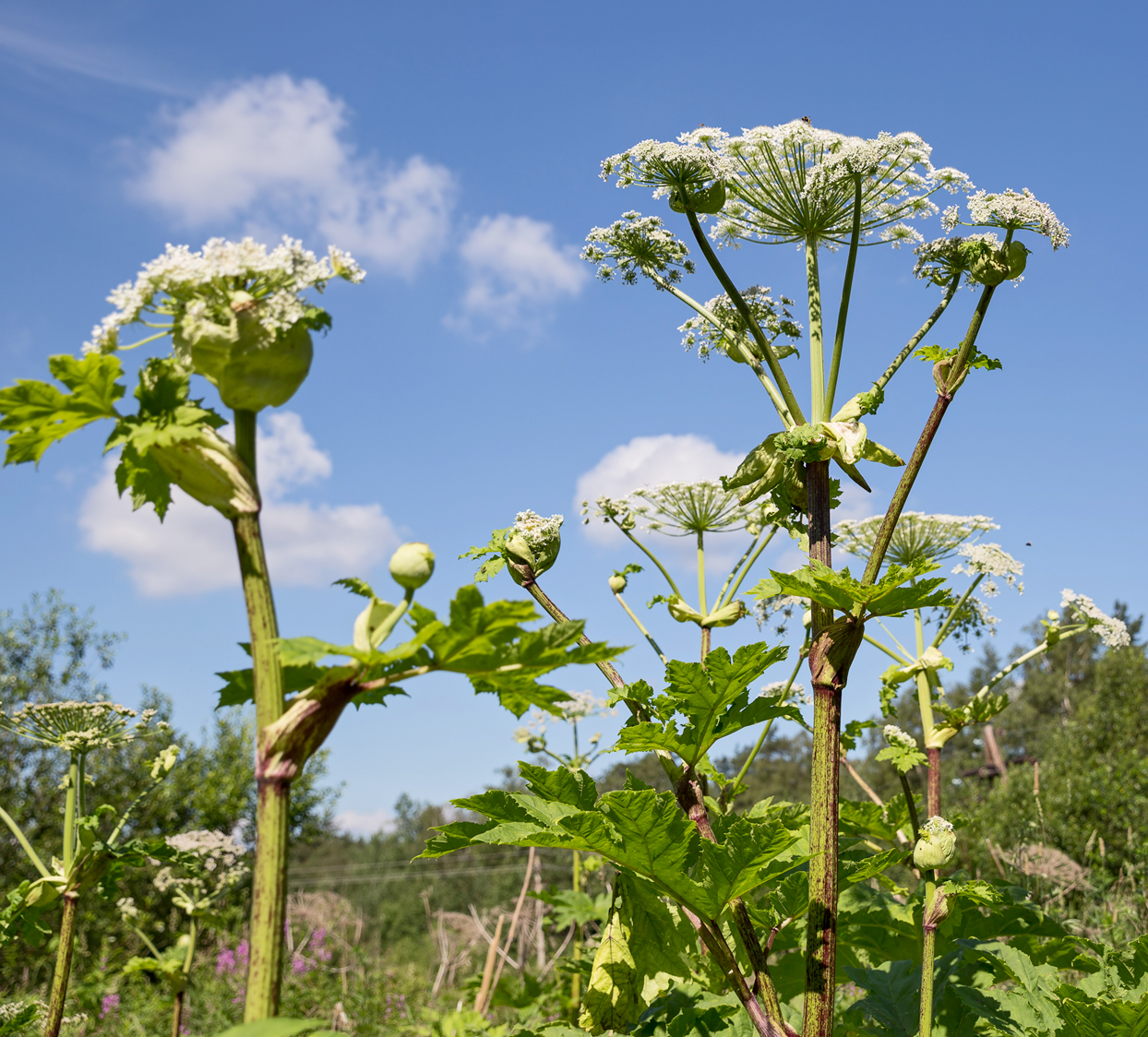Beware of giant hogweed

There have been reports of giant hogweed found along Northrup Creek in the Valley Park area near the Ogden-Parma town line. Anyone in this area should exercise extreme caution.
Giant hogweed is a non-native invasive plant that can cause painful burns, permanent scarring and even blindness. DEC warns against touching any part of the plant, as skin exposed to both giant hogweed sap and sunlight can be severely burned. As a noxious weed, it is unlawful to propagate, sell or transport. In addition to being a health concern, it crowds out native plant species and can contribute to soil erosion.
Giant hogweed grows along streams and rivers and in fields, forests, yards and roadsides. It prefers open sites with abundant light and moist soil but it can grow in partially shaded habitats, too.
Now is the best time to discover giant hogweed locations as the plants are currently flowering and setting seed. Flowering giant hogweed plants are 8 to 14 feet tall with very large flat-topped clusters of small white flowers, have a green stem with purple blotches and coarse white hairs, and large leaves up to 5 feet across. There are several plants with similar features, so proper identification is key.
If a plant is suspected to be giant hogweed, there is a three step procedure to follow:
1. Do not touch the plant. If the sap touches your skin, immediated wash with soap and water and protect the area from sunlight for 48 hours.
2. Take photos of the entire plant (stem, leaves, flower and seeds). Then, report information on plant numbers and locations to the DEC – either attach photos to e-mail ghogweed@dec.ny.gov or call the Hogweed Hotline at (845)-256-3111.
3. If confirmed, DEC will contact the landowner to discuss control options.
For more information and resources to identify giant hogweed, visit www.dec.ny.gov/animals/39809.html.
Provided Information


